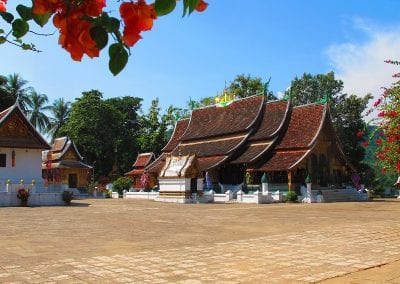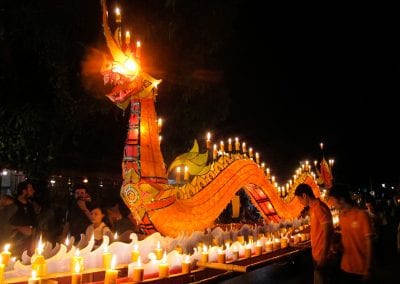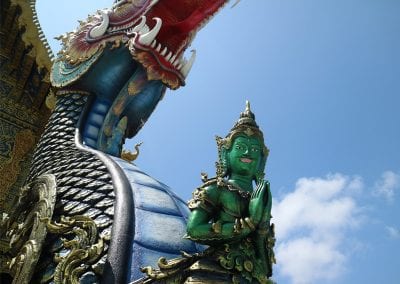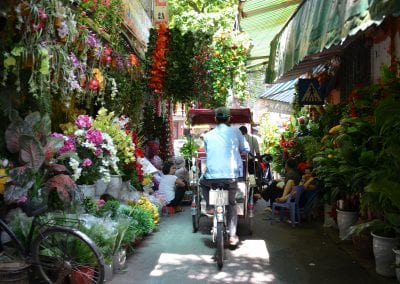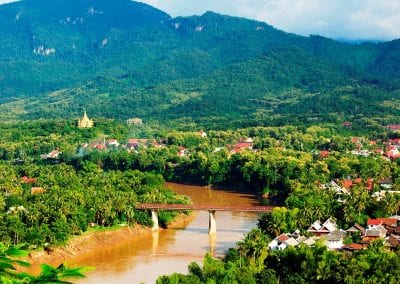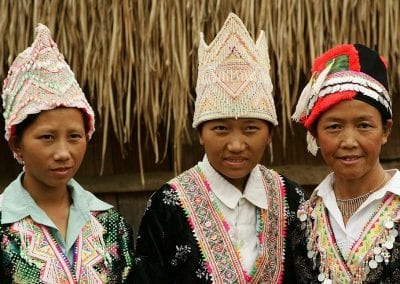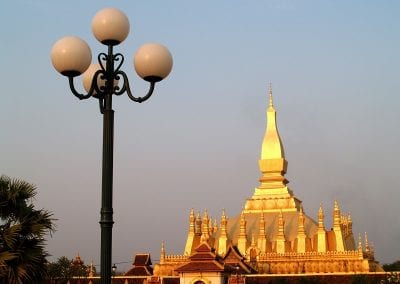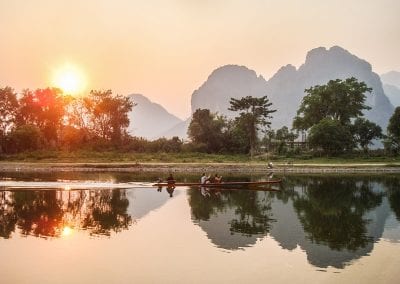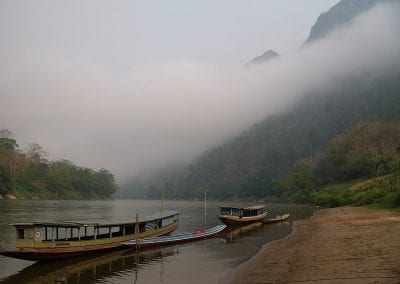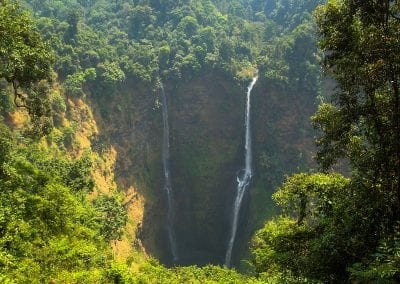
Luang Prabang
The georgeous city of Luang Prabang, once the capital of Laos and still considered to be its spiritual heart, breathes a rich mould of French Indochinese architecture, Theravada Buddhist temples and a magical atmosphere. Situated on a peninsula formed by the confluence of the Mekong and the Khan rivers, the town is simply beautiful and oozes a chocolate box like charm. Its palm-lined riverbanks, terracotta roofs, golden stupas and saffron-robed monks all come together to form a picture postcard, which is increasingly difficult to find in Southeast Asia. No visit to Laos is complete without visiting Luang Prabang and when you do you will be sure to want to return to experience the feeling of this town again and again.
Area Highlights: Traditional Alms, Markets, Architecture, Mount Phousi, Pak Ou Caves, Kamu Lodge, Kuang Si Waterfall, Golf
Area Activities: Kamu Life Experience, Kuang Si Waterfall, Laos Elephant Safari, Learn to play Petanque, Luang Prabang City Tour, Golf, Morning Alms & Market Tour, Pak Ou Caves & Whisky Village

Pak Beng
Pak Beng sits midway between Huay Xai and Luang Prabang to the west on the Mekong River. As the river was once the only major transport route in the country, Pak Beng has developed in to an overnight stop for both cargo and passenger ferries. This route down the Mekong river, is absolutely spectacular and it remains a popular transport route; meaning Pak Beng town is flourishing. Set in a particularly scenic spot, where the Nam Beng flows into the Mekong (Pak means mouth, and Beng is the name of the river) Pak Beng is also the stopping point for river cruises starting from Huay Xai on the Laos and Thailand border.
Area Highlights: River Cruises, Local Riverside Life

Oudomxay
Oudomxay is a province in Northern Laos, consists of several villages (called “ban”) and two bigger towns: Muang Xay (the provincial capital) and Pak Beng. The province is home for several ethnic groups which you can experience in villages, where people still live their traditional life. There is not a huge amount to see in Oudomxay and the town is used as a stepping stone to getting back to Luang Prabang after a Nam Ou river adventure. The town offers one good hotel option but many travellers that can afford to treat themselves have the option of staying at the lovely spa hotel in Muang La.
Area Highlights: River Cruises, Local Riverside Life, Hot Springs, Walking, Cycling, Cooking

Phonsavan
The bustling town of Phonsavan is the capital of Xieng Khuang province and is famous for being the most heavily bombed in Laos. Today the region remains littered with unexploded ordinance (UXO) and the evidence is everywhere. The resourceful locals use bomb casings and other remnants for every purpose imaginable: as fences and parts of their housing, as tools, vegetable planters, decorations and barbecue fireplaces. The province is also the site of the incredible and mysterious Plain of Jars; which are literally huge stone vessels, believed to be ancient funerary urns. The origin of these enormous jars is unclear and the area has 3 of these mysterious sites for you to discover.
Area Highlights: Plain of Jar sites 1, 2 & 3, Tham Piu Caves, Tham Xang Caves
Area Activities: Plain of Jars & War Caves Tour

Nong Khiaw
Nong Khiau is a small picturesque and rustic town that lies on the crossroads of the bridge that leads to Sam Neua and the Nam Ou River. This little settlement is blessed with probably some of the most attractive natural settings in Northern Laos, with stunning vertical limestone mountains that fall in to the river below. The town is used as a one or two night stop on our Non Khiaw river adventure and is a wonderful place to sit back relax and fine oneself.
Area Highlights: Local Massage, Sunset Hill, Riverside Viewing

Luang Namtha
Nestled in the north of mountainous Laos, just a hop, skip and a jump from the Chinese border, Luang Nam Tha has a remote, cowboy town feel to it but makes an excellent base for exploring the many natural wonders of the province of which it is capital. Formed by three long, straight and flat roads, the town and its life centres around its two markets. Trekking, mountain-biking, rafting and kayaking are among the growing number of ways to enjoy the stunning scenery surrounding Luang Nam Tha. As many argue, tourism here can help send a message to locals that their culture and forests are important and valuable in their own right. Money you spend on access permits goes to wildlife and forest conservation projects.
Area Highlights: Trekking, Mountain Biking, Kayaking

Sam Neua
Sam Neua lies in a small picturesque valley and is a town of white concrete houses topped with red roofs, surrounded by the vibrant green of rice fields and the grey-green of the mountains. The town is famous for two major reasons. Firstly, for the locally-woven fabrics, which are sought after across Laos and considered the most eye-catching and beautifully crafted pieces in markets and shops. And secondly, Sam Neua is the perfect base for those wanting to explor the nearby Vieng Xai Caves. A number of the caves are open to visitors, giving you an insight into the dark and damp conditions that the Pathet people lived to avoid being bombed by the Americans between 1944 and 1975.
Area Highlights: Vieng Xai Caves
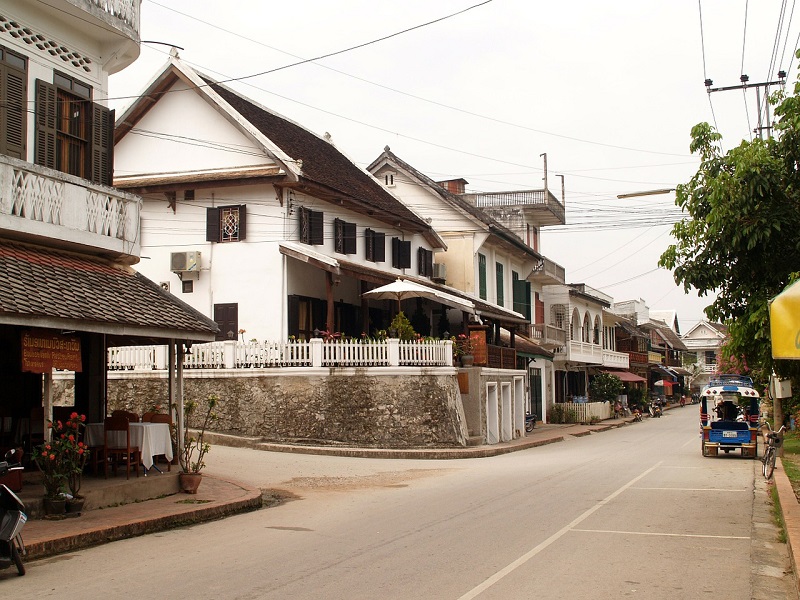
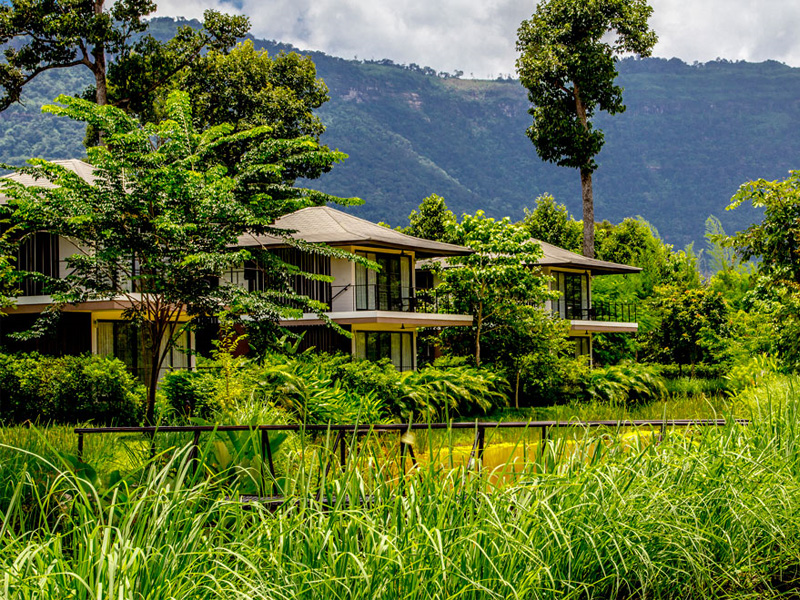

 Trustpilot
Trustpilot
 Tripadvisor
Tripadvisor



















